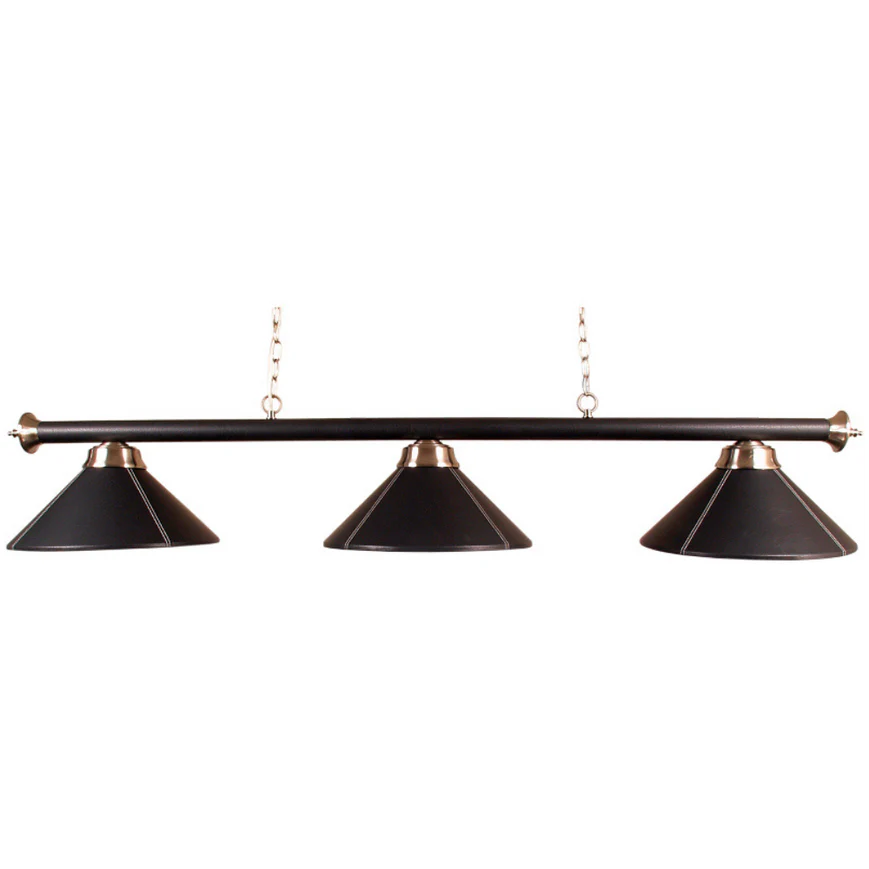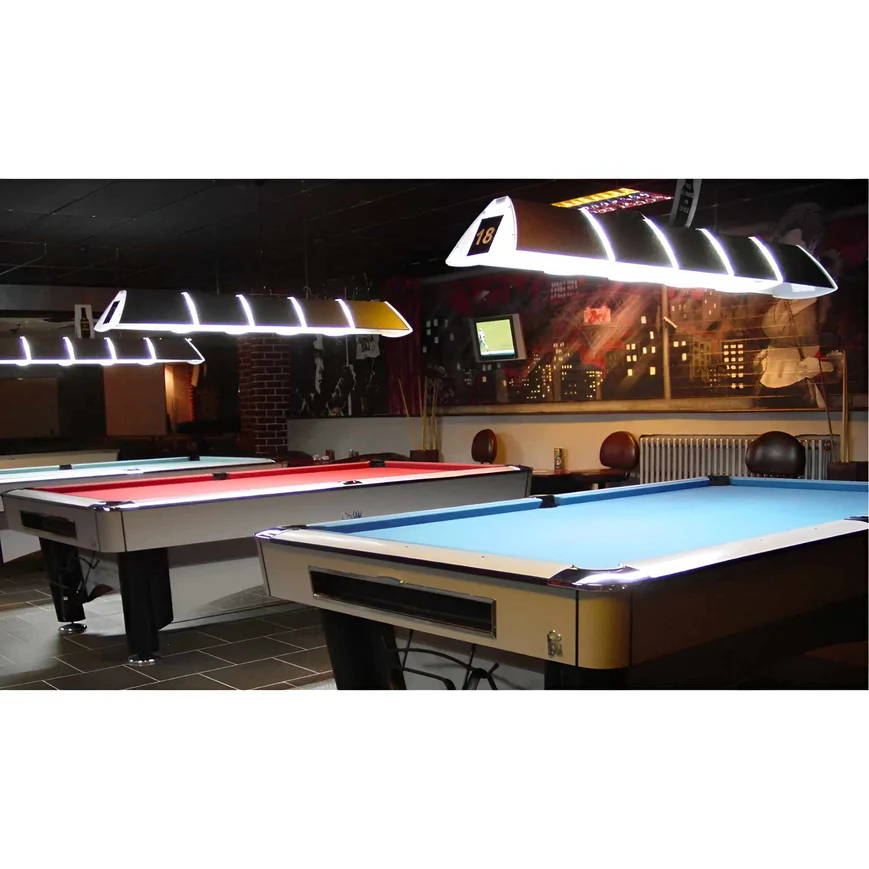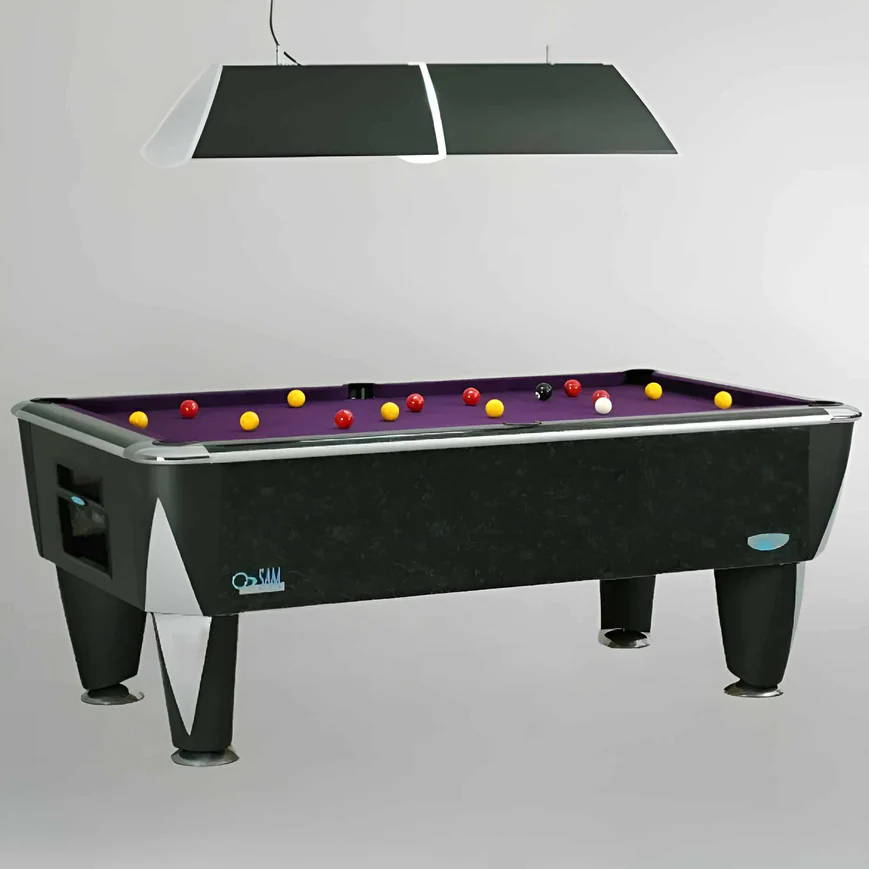Lights and Shadows: The Importance of Proper Lighting Over Your Pool Table
Setting the Stage for Perfect Play
In the realm of cue sports, precision is paramount. Every angle, every shot, every spin is a calculated decision made in mere moments. While the skill of the player is undeniably the most crucial element, the environment plays a pivotal role in influencing the game's outcome. One of the often-underestimated factors in this environment is the lighting over the pool table. Just as a theatre requires impeccable lighting to bring performances to life, a pool table demands perfect illumination for the best gameplay.
Avoiding the Pitfalls of Shadows
Every object, when subjected to light, casts a shadow. On a pool table, these shadows can prove detrimental. The balls, the cue, and even the player's hands can cast shadows that obstruct vision, make angles deceptive, or conceal the finer details of the table. A dimly lit table or one with multiple light sources can introduce unpredictable shadows, making gameplay inconsistent and challenging.

Uniformity is Key
Uniform lighting ensures that every part of the table, from pockets to center, receives equal illumination. This uniformity allows players to predict ball movements accurately, plan shots without worrying about light discrepancies, and maintain a consistent visual experience. Whether attempting a long shot from one end of the table to the other or trying to pot a ball in a far corner, consistent lighting ensures that a player's vision remains unhampered.
The Color Temperature Conundrum
Beyond the brightness and uniformity, the color temperature of the lighting can influence a player's perception. Lights that are too 'warm' can make the table appear yellowish, while very 'cool' lights can render a bluish hue. Both extremes can distort the true colors of the balls, making them hard to distinguish, especially in games where ball color determines the next shot. Choosing a neutral color temperature, which mimics natural daylight, ensures that the vibrant colors of the pool balls stand out clearly against the cloth.
Reducing Glare and Eye Strain
Playing pool, especially in tournaments or prolonged practice sessions, means players are continuously focusing, aiming, and recalibrating their vision. Improper lighting can introduce glare, which not only hampers vision but can also strain the eyes over time. Properly diffused lighting, positioned at the right height and angle, can drastically reduce glare, offering players a comfortable and optimal playing environment.
Enhancing the Aesthetics and Ambiance
Beyond functionality, lighting plays a significant role in defining the aesthetics and ambiance of the playing area. A beautifully designed light fixture, suspended over a pool table, can become a statement piece, elevating the decor of the room. The right lighting can transform a simple game room into an elegant arena, adding a touch of sophistication and charm.
Safety and Practicality
A well-lit pool table also ensures safety. Players can move around freely, without the risk of tripping or bumping into the table. Additionally, when racking balls, chalk, or other small accessories on the table, proper lighting ensures that they are easily visible, preventing them from being overlooked or misplaced.
Making the Right Choice
Given the importance of lighting in cue sports, selecting the right fixtures and bulbs is crucial. While aesthetics and design are personal choices, the functional aspects, such as lumens, color temperature, and diffusion, should align with the requirements of the game. Adjustable fixtures, which allow players to change the height or angle of the lights, can also be a valuable addition, catering to varying needs and preferences.
The Subtle Nuances of Pool Table Illumination
Psychological Impacts of Proper Lighting
The ambiance created by lighting isn't only about aesthetics. It profoundly affects a player's psychology. In an environment where focus is key, proper lighting can reduce distractions and help players enter a 'flow' state, where they are entirely immersed in the game. Contrarily, inconsistent lighting can induce stress or annoyance, affecting a player's concentration and, subsequently, their performance.

The Interplay of Light and Cloth Color
Pool tables come in a variety of cloth colors, from the traditional green to modern blue, red, or even black. The reflection and absorption of light differ across these colors. For instance, a black cloth might require more intense lighting compared to a lighter hue, to prevent it from absorbing too much light and appearing dim. Understanding this interplay is essential to customize lighting solutions based on the table's cloth color.
Evolution of Lighting Solutions
Just as cue sports have evolved over time, so have lighting solutions. The traditional chandeliers have given way to LED panels, offering brighter, more energy-efficient, and customizable lighting options. These modern solutions often come with features like dimming or color temperature adjustments, allowing players to tweak the lighting to their preference, ensuring both functionality and energy conservation.
Incorporating Technology: Smart Lighting Systems
The age of smart technology hasn't left pool table lighting untouched. Modern systems can be integrated with smart home systems, allowing players to control them through voice commands or mobile apps. Imagine adjusting your pool table lights using a voice command or setting automated schedules to ensure the lights are at their optimal brightness during your regular practice sessions.
The Economics of Lighting
While the primary consideration for pool table lighting is its impact on gameplay, economic factors also play a role. Energy-efficient lighting solutions, like LEDs, might have a higher upfront cost but save significant amounts in the long run due to their durability and lower energy consumption. Moreover, with global shifts towards sustainability, choosing eco-friendly lighting solutions can also be a step towards a greener planet.
Professional Standards and Regulations
In professional pool tournaments, lighting isn't just a matter of player preference. There are set standards and regulations defining the brightness, positioning, and even the type of lights permissible. These standards ensure a level playing field for all participants, eliminating any advantages or disadvantages arising from lighting variations.
Feedback Loop: The Player-Light Interaction
Advanced players often adjust their playing style based on the lighting conditions. For instance, under brighter lights, they might opt for more aggressive shots, given the clarity of vision. Conversely, in dimmer settings, they might play more cautiously. Recognizing this feedback loop where the lighting affects player strategy, and player strategy, in turn, dictates lighting adjustments, can be instrumental for serious players and coaches.

Conclusion: Illuminating the Path to Victory
In the dance of balls and cues on a pool table, lighting plays an unseen yet critical role. It sets the stage, defines the mood, and most importantly, ensures that the player's skills are complemented by an optimal environment. Investing in proper lighting is not just a matter of aesthetics; it's a commitment to enhancing gameplay, ensuring safety, and celebrating the beautiful game of pool in all its glory. Whether a casual player or a professional, the significance of perfect lighting over a pool table remains universal, casting away shadows and illuminating the path to victory.
Are you looking for a Pool Table? check out our pool tables range Pool Tables





